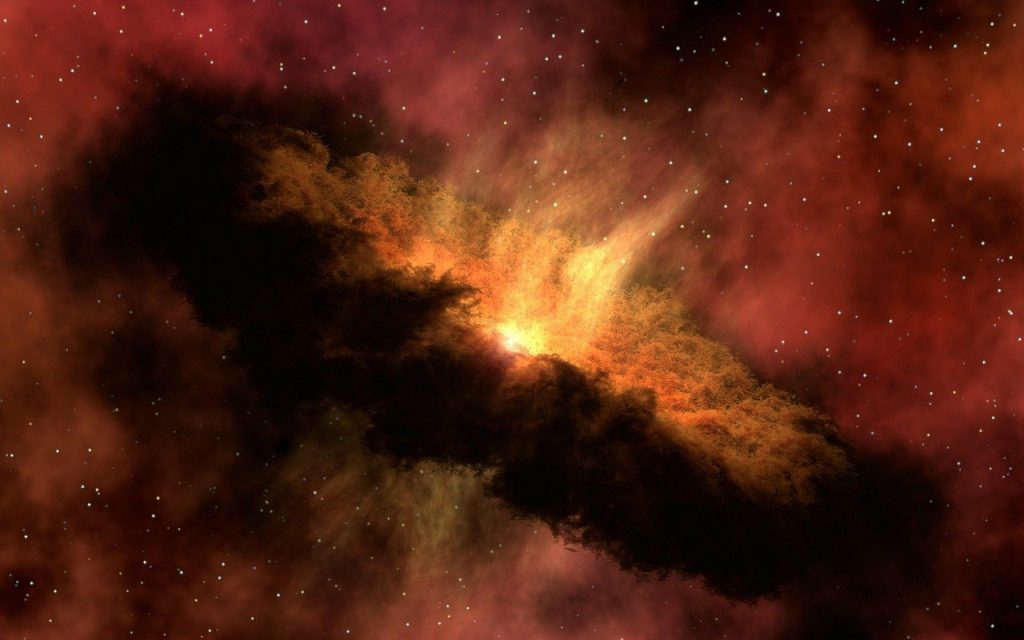While there’s a lot we know about the world around us, there’s a whole lot more we don’t know. While science can explain many things we experience in our lives and many things in the wider universe, there will always be things that don’t have any sort of explanation. One of those is the origin of the universe itself. The leading theory is that the universe came to be through some sort of ‘Big Bang’. What exactly does this theory entail and who’s behind it?
The Big Bang

The Big Bang isn’t a discovery as such; it’s more of a theory. While it can’t be definitively proven, it is generally accepted by many as the most likely origin of the universe. It states that since galaxies and other components of the universe are gradually moving away from one another, the universe must be expanding. If you reverse the expansion, you get to a point where everything in the universe – that is to say, each and every atom – is condensed into a single point that’s the beginning of both space and time.
This single point – or singularity – is believed to have come into existence approximately 13.8 billion years ago. It was extremely dense and its temperature was incredibly high. For some reason, this compacted ball of matter began expanding and as it did, it became a lot less dense and cooled down significantly, enabling laws of physics to come into effect.
The initial expansion has been likened to a sort of explosion. Some people mistakenly say about the Big Bang that matter expands into space; however, what’s actually the case is that it’s space itself that’s expanding. When the Big Bang took place, matter expanded, but what also happened was that time and the laws of physics that govern the universe ‘started’.
Scientist and astronomers have found lots of evidence that supports the idea of an expanding universe and, in turn, the Big Bang. Even though many believe in the Big Bang theory, there are still some alternatives that people prefer to back.
The Man Behind the Theory
For millennia people have been looking to the skies and wondering about the origins of the universe. Many have talked about the universe and its beginnings, though the first to put forward a proper theory was Georges Lemaitre, a Belgian mathematician, astronomer and priest.
In 1927, he established the idea that the receding of nearby galaxies can be explained by the universe expanding. Four years later in 1931, he added to this by proposing that since the universe is expanding, it should contract and get smaller the further back you time in go; rewind time for long enough and you should reach a point where all matter is condensed into a single point. From this point, everything about the universe originated.
At the California Institute of Technology in Pasadena, Lemaitre formally presented his theory to the academic world. He called it the ‘hypothesis of the primeval atom’, with the ‘primeval atom’ referring to what we now call the ‘singularity’. His theory wasn’t widely supported at first because the prevalent idea at the time was that the universe was static and was neither expanding nor contracting.
Lemaitre was born in 1894 and died in 1966. He served in the Belgian army during World War I and after that went on to study physics and maths at university. Alongside his studies, he prepared for a diocesan priesthood. At the time Lemaitre was alive, the science vs religion debate was still ongoing. It’s interesting that the man who established such a profound theory wasn’t just a man of science, he was also deeply religious.
Lemaitre’s Legacy
Lemaitre published a more in-depth version of his theory in 1933 that earned him even more recognition and cemented his reputation as a leading cosmologist. His idea, which came to be supported by a number of discoveries made over the next few decades, is the building block on which modern astronomy is based.
He was nominated for two Nobel Prizes – Physics in 1954 and Chemistry in 1956 – though he didn’t win either. Some of the honours he did win are listed below:
- The Francqui Prize in 1934 – this is Belgium’s top distinction for scientists
- The Prix Jules Janssen in 1936 – this is the French astronomical society’s top award
- The Eddington Medal by the Royal Astronomical Society in 1953
In 2011, a team of three scientists – Saul Perimutter, Brian P. Schmidt and Adam G. Riess – received the Nobel Prize in Physics. The team were awarded the prize for observing distant supernovae to prove the accelerating expansion of the universe. This work would not have been carried out at the time, had it not been for Lemaitre and his fundamental Big Bang theory.

